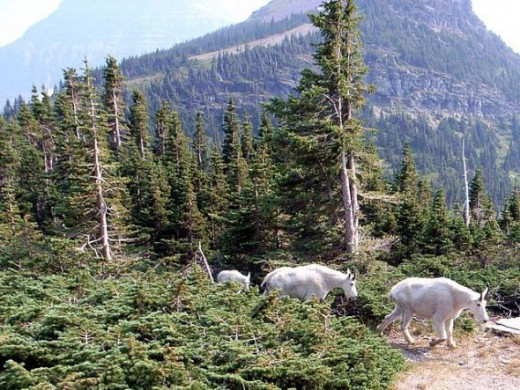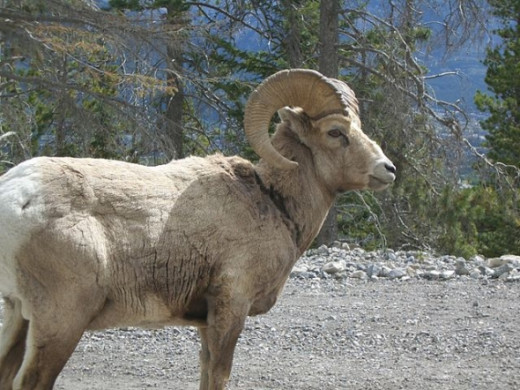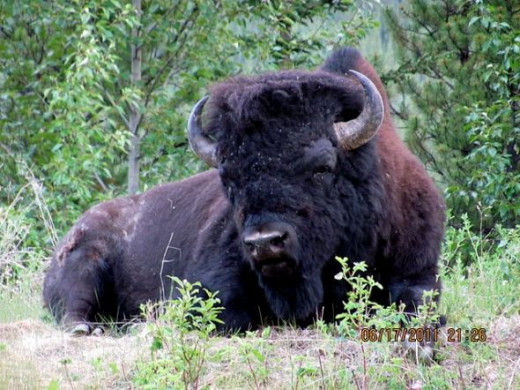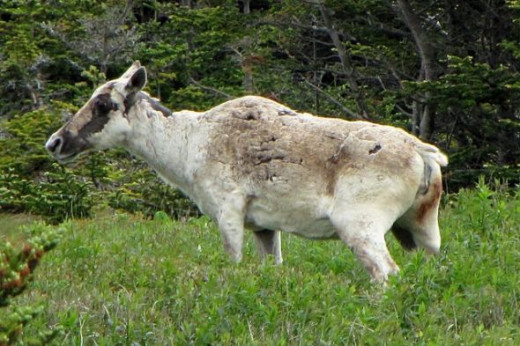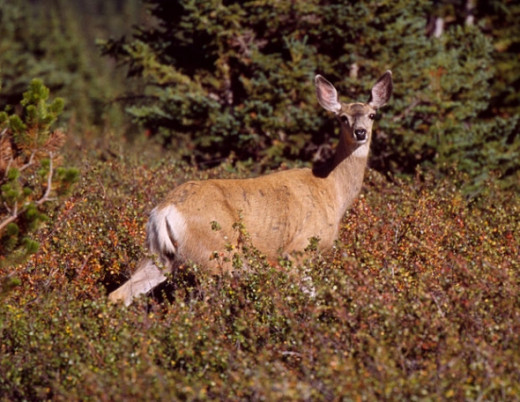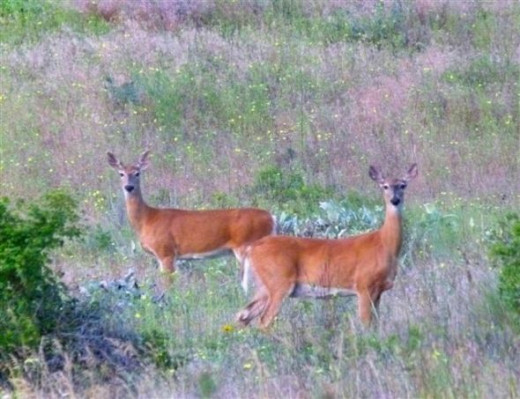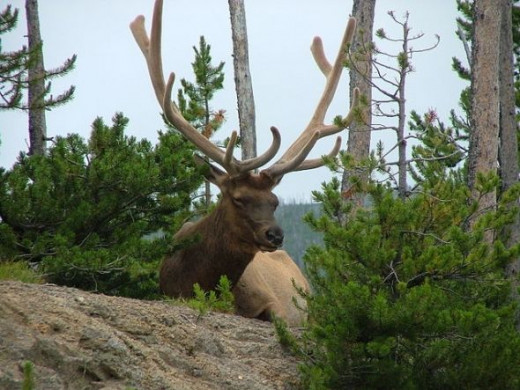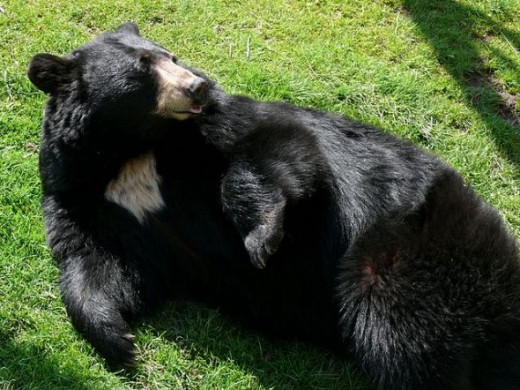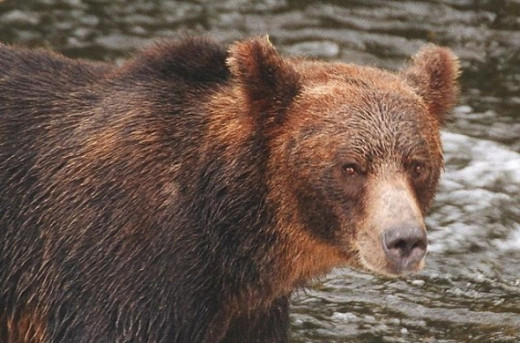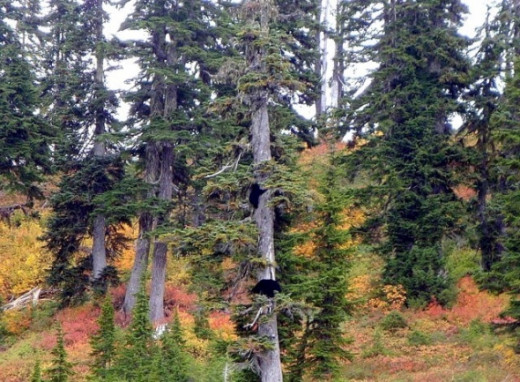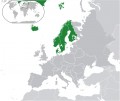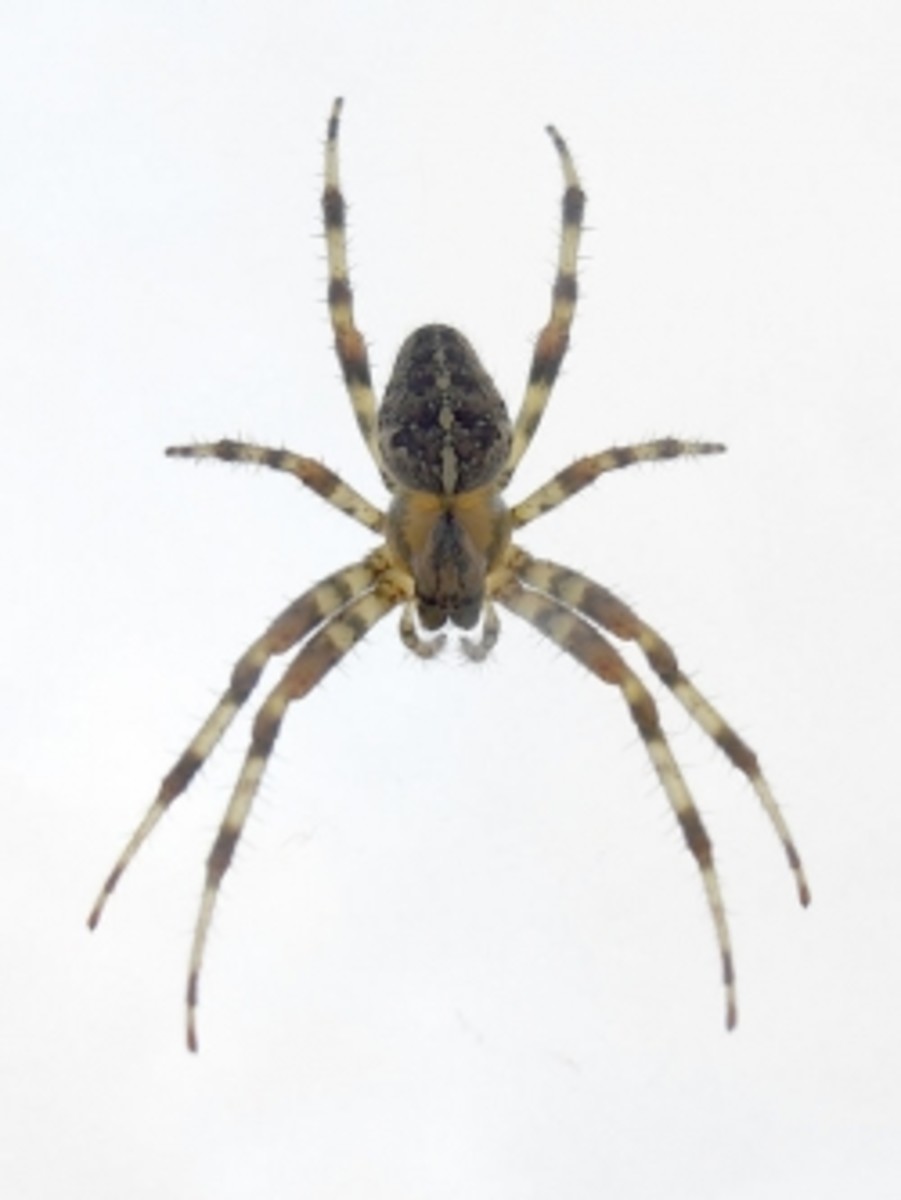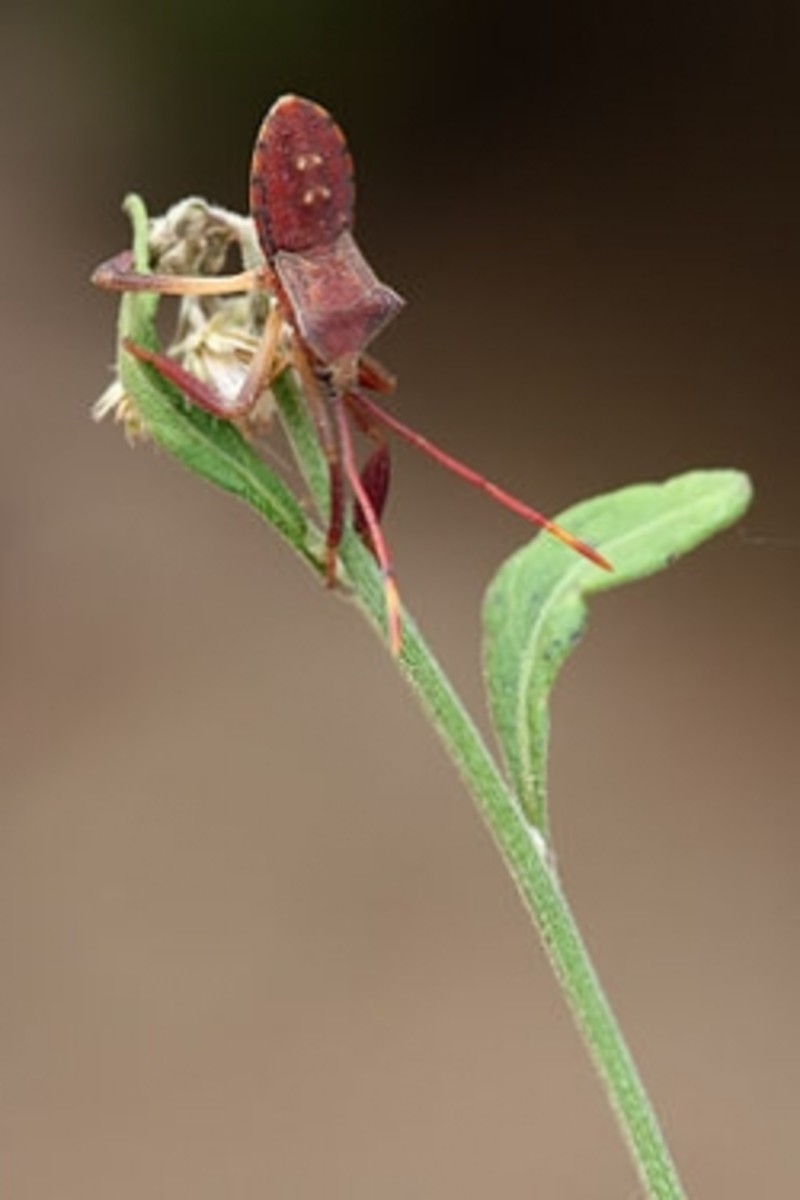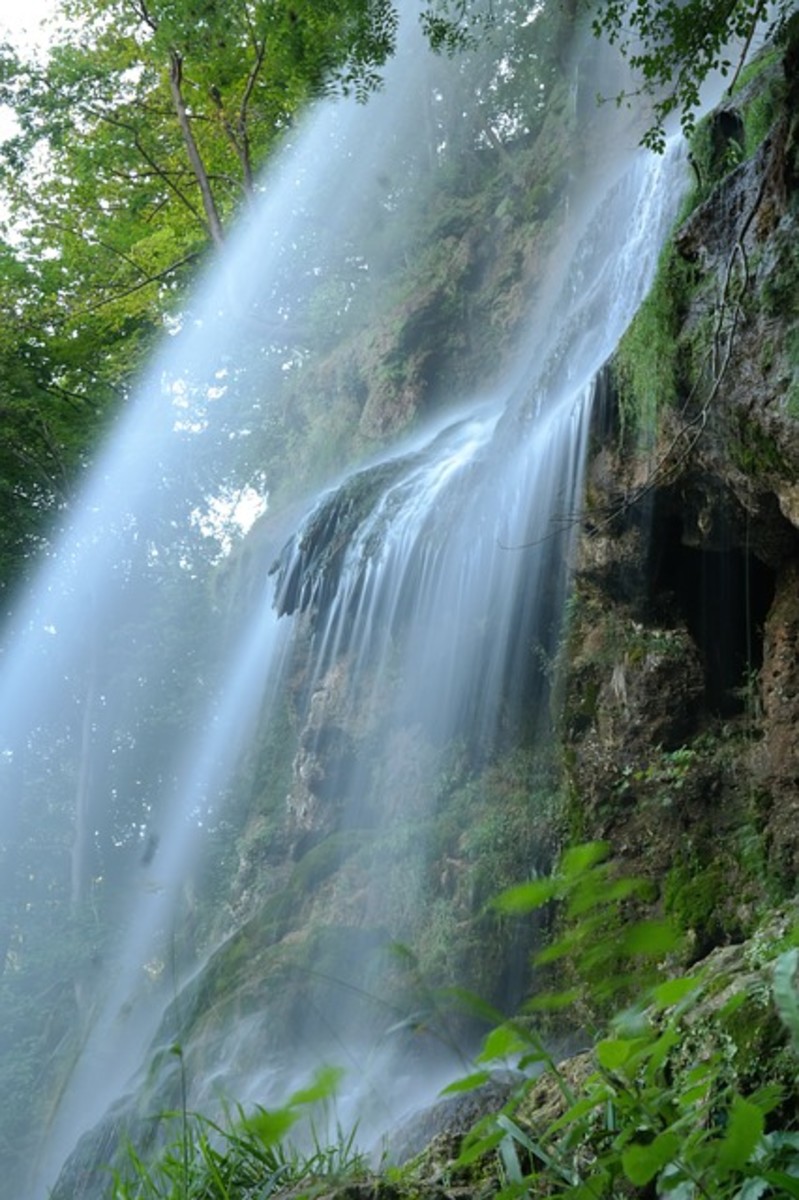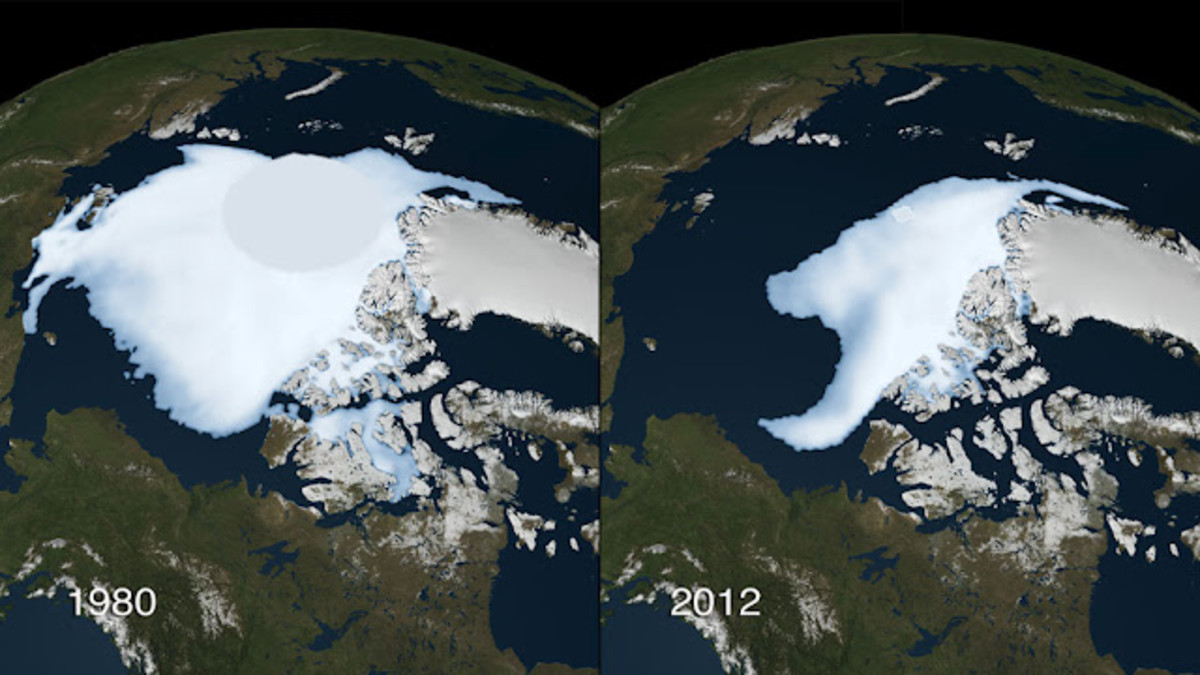Canada's Boreal Forest
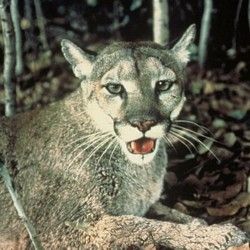
A National Heritage We Need To Protect
TIMBER-R-R-R! rings out through the woods. Seconds later, another mighty giant of the forest hits the ground with a rending crash. But, turn your eyes to the mountain slope where the giant fell.
It is along the rugged coastal range of British Columbia's mountains that the magnificent douglas fir, sitka spruce, cedar, hemlock, balsam and pine grow. One mountain after another stretches away into the distance, all clothed with forests so thick that, without a well-marked trail, a person could quickly lose himself in them.
The rocky shoreline in some places is exposed to the full sweep of the sea. At other places there are sheltered coves and long narrow fjords where tidewater mingles with rushing waters of small rivers and creeks. Here, in the west, is the beginning of Canada's boreal forest named after Boreas, the Greek god of the North Wind.
Canada's boreal forest covers a vast area and is truly a wonderful national heritage and globally significant wilderness. I will endeavor to give you a feel for the region and its residents, their difficulties and some possible solutions.
Recommended for the Purple Star.
According to the Purple Star Program,
purple stars are awarded to Lenses that are:
* Masterpiece lenses.
* Lenses making a name for themselves.
* Lenses trying new things.
Update Sept. 4, 2012
This lens was also awarded Lens of The Day.
Thank you SquidTeam and all of those who helped make this happen!
What an honor! Thank you!
~ LaraineRose
Map of the boreal forest in Canada
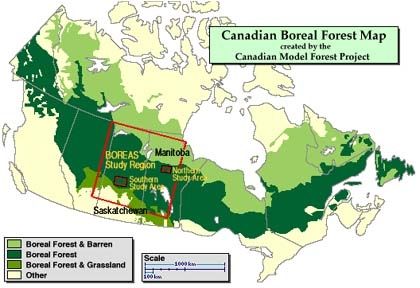
The largest forest on earth with 4.4 billion square kilometers of undisturbed forest interspersed with vast wetlands covers 60% of Canada. This 1,000 kilometres wide belt made up of coniferous trees, stretching from the West Coast to the East Coast, separates the tundra in the north from the deciduous woodlands of the South.
BENEFITS
Forest Hospitality
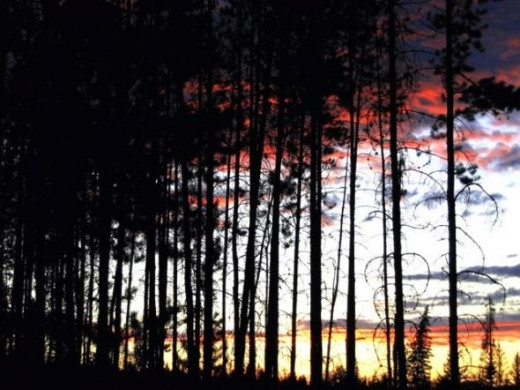
The Canadian boreal forest that spreads across the vast uppermost regions of Canada is made up predominantly of cone-bearing (coniferous) trees including cedar, Douglas-fir, cypress, juniper, kauri, larch, Jack-pine, hemlock, redwood, spruce, and yew.
Both man and wildlife are often drawn to the forest because of its hospitality. Trees provide shelter from the heat of the day and a covering from the exposure of the night. The forest is home for birds, insects and larger animals, such as deer, bear and bobcat. Orioles make nests that look like long pouches dangling from the branches of trees. Woodpeckers dig holes in the trunks of dead trees and make their homes inside. Trees are also homes for squirrels and other animals.
The hospitable forest serves man well. It protects, sustains and actually improves mankind's supplies of available water. The floor of the forest soaks up water like a sponge, protecting the soil from erosion and filtering clear water into lakes and streams, in which fish, otter, ducks and other creatures live and play. The forest floor also feeds the underground reservoirs with water for future use.
In addition, trees purify man's air. Within tiny leaf cells light from the sun combines with carbon dioxide taken from the air to form a simple sugar, later converted into other carbohydrates, including the cellulose of the wood itself. Trees also return to the atmosphere oxygen, which man breathes. That is one reason why air smells better in the forest, and why forests are vital to life on earth.
The forest also breaks up the flow of the wind. This can have an impact on the cycles of rain, snow, wind, and temperature. This, in turn, affects the variety of food you enjoy, the type of clothes you wear, perhaps even the architectural design of your home. These are just some of the many beneficial accomplishments of the boreal forest.
A haven for many animals and birds .. - that would otherwise be on the endangered species list.
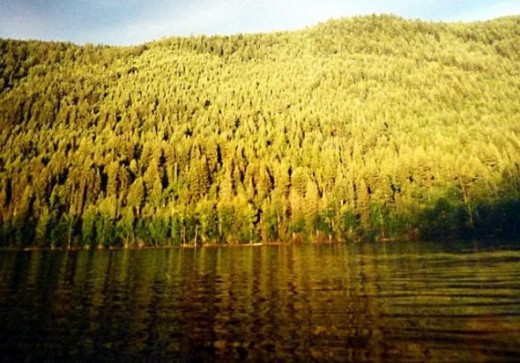
The Canadian boreal forest provides a haven for many animals that would otherwise be on the endangered species list.
Many are coming to realize that what happens to wildlife is closely linked to the welfare of humans. "Humankind clings to but one thread of the mysterious web of life on earth," noted an article in Reader's Digest of June 1975. "We pluck on the others at our peril."
* Here are some residents finding protection in the boreal forest of Canada
The Great Grey Owl
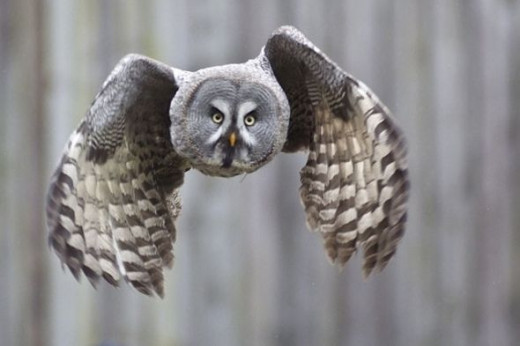
Photo courtesy of: Wikipedia
Photo by: Arne List
I saw this most beautiful forest dweller for the first time one day in June. I was a bit surprised because it is a secretive and difficult bird to find if you do not know where its nest is.
I was able to study the finely marked male as he scouted for food. He would suddenly leave a bough and plunge to the earth. Did he get his prey? Oh, yes! I could clearly see a little rodent hanging in his talons as he moved upward in slow, imposing flight upon huge wings that stretched 50 inches from wing tip to wing tip.
The Great Grey Owl does not breed regularly every year as do many other owls. This giant owl feeds only on small rodents, so some years, when these are in short supply, breeding stops completely. Without care this owl could well disappear wthin two or three years.
Beaver - Image on the Canadian Three-Penny Stamp
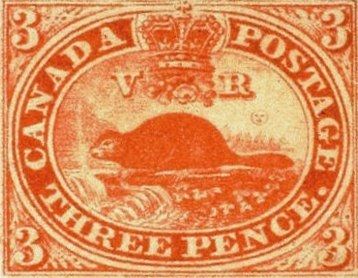
Before European settlers arrived, the North American beaver population was between sixty and one hundred million. But by the turn of this century they had almost been exterminated because of excessive trapping to fill the craze for beaver hats and pelts.
Currently in many districts in Canada the government Department of Lands and Forests sets up boundaries for each area to be trapped. Yearly limits are placed on certain kinds of animals caught on each trap line. This assures a continued population of animals. Thus the beaver which, some years ago, was in danger of extinction, once again abounds through the northern bush-lands. Such controls also make the trapper conscious of and more concerned with conservation, as it means his livelihood.
The beaver of the boreal forest enjoy protection.
Amazing Engineers! - One of the most important animals in the boreal forest
Watch these busy, engineers build dams and lodges using the trunks of trees they have gnawed off with their ever-growing front teeth. The dams flood parts of the forest, creating ponds and wetlands that are used by fish, waterfowl, and amphibians.
Points To Ponder
How did the beaver come to have teeth that can cut down trees and a tail so suited to plaster his abode? Where did he get the motivation to build, first a dam, and then a safe, comfortable home? How is it that its dams are benefitial to the boreal forest?
Lone Lynx
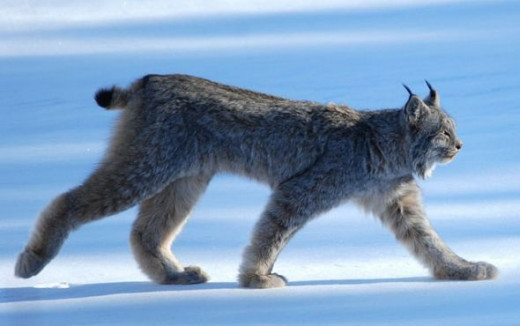
Courtesy of: Wikipedia
Photo by: Keith William
Today the lynx is found only in isolated regions of the world. It has found a home in Canada's boreal forest.
Stalking its prey at night, the lynx works alone. Its well-furred feet, powerful legs and sharp claws help it to travel on the snow and capture its' prey during the harsh winter months in Canada's boreal forest. The snowshoe hare of the forest makes a tasty meal but it is often lost in pursuit and Mr. Lynx needs to try again, or take advantage of other foods-of-choice such as, mice, voles, grouse, ducks, beavers or squirrels (or go hungry). It has been reported that some lynx have even killed deer, earning them the reputation of being fierce and aggressive hunters.
A reference book on wild cats says: "Lynx need two kinds of forest habitat to live comfortably: dense patches of gnarly, tangled mature forest for shelter and birth-dens, and lush, juicy meadows and young woods where they can hunt for hares."
Conservation efforts in British Columbia have helped the Lynx to survive. Modern selective logging techniques have also helped. Meadows created after trees have been logged off have left habitats for hare to feed.
Indeed it is important that we live in harmony with and preserve the boreal forest for creatures like the lynx.
A fact I found interesting.
As the hare population increases, so does the lynx population.
When food is scarce, litters are smaller.
Grey Timber Wolf
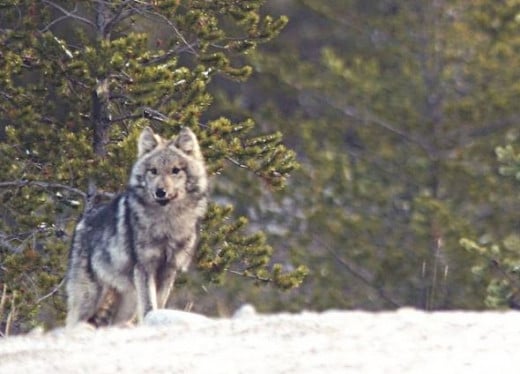
"A carnivorous animal resembling a dog, a large German shepherd, but having longer legs, larger feet, a broader head, and stronger jaws," that is the description given for the Timber Wolf. They seek their prey under the cover of darkness, remaining in hiding during the day. Their preferred meal include: deer, elk and moose, but they will also take smaller prey like voles.
Reports of human deaths at the jaws of wolves are not infrequent in parts of Europe and central Asia, particularly Russia.
That this should be the case may seem very strange in view of an entirely different record for wolves in other parts of the earth. The work: The Animal Kingdom (1954, Vol. I, p. 431) states: "The gray or timber wolf has a forbidding reputation - all of man's history is studded with accounts of its ferocity. Yet there is no verified report of a wolf's ever having made an unprovoked attack on man, anywhere in North America."
Despite the fact that the reputation of the North American wolf has not been that of a man-eater, this creature has been the object of intense hatred. Over the years, farmers and ranchers have waged relentless warfare against it, virtually driving it into extinction. Now it is basically limited to parts of the boreal forest of Canada.
Monster Moose
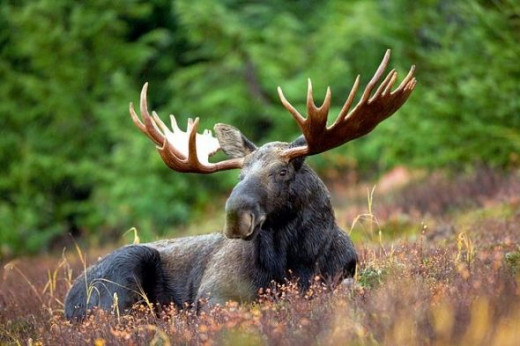
The largest of the deer family is the giant moose that lives in the boreal forest of Canada. It often reaches more than six feet in height at the shoulder with the Bull Moose often weighing 1,000lbs.
Except for females with calves, moose normally range solitarily in a wide area of the boreal forest, including bogs and marshes. They rely on heavily forested regions to evade predators.
As do the deer and elk, during the lean winter season, moose nibble the young branches of trees, especially pines.
Moose enemies are: wolves, bear, man and Brainworm, a parasite carried by white tail deer. (Effects a moose's nervous system and can bring about death.)
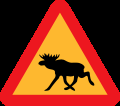
Why does a moose cross the road?
MOOSE IN THE NEWS
Why does a moose cross the road? This question is no joke to Newfoundland's wildlife biologists or to local drivers and the thousands of tourists who use the province's highways.
"There are about 300 car-moose accidents a year on Newfoundland's highways, several of which result in the death of drivers," says The Globe and Mail newspaper. "A mass of up to 450 kilograms (1,000 pounds) of moose can slam down on the roof of a car like a boulder, killing or maiming."
"Simply reducing the size of the current moose population of 150,000 on the island may not work," says Shane Mahoney, of the Natural Resources Department, "because in a number of areas where there is a low density of moose, there are a high number of accidents."
By analyzing herd movements, scientists hope to learn why moose, who are naturally frightened by traffic, decide to cross the road.
Red Squirrel
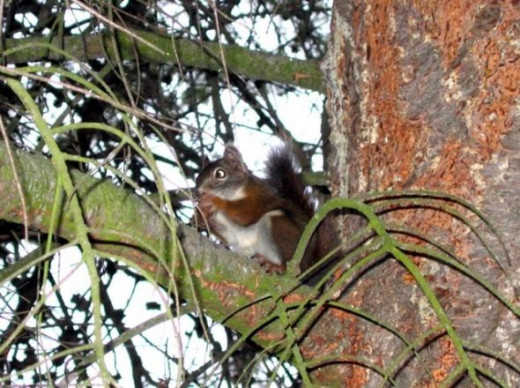
Spring and summer can be quite short in the boreal forest in northern Canada but red squirrels are well adapted to these short periods of plant productivity. They keep themselves alive by burying and hiding the high energy snacks of coniferous tree cones and nuts during warmer months for eating during the winter months. One squirrel can bury over 100 cones each day.
I have had the opportunity of watching one such squirrel scurrying about from our nut tree to his home across the pasture with his mouth full and then back again in no time flat. In the spring, when planting our garden, I find little nut trees popping up everywhere. Similarly squirrels enthusiastically disperse the cones and seeds of the boreal forest. The seeds are somewhat protected and have a better chance of germinating, when they are buried under an inch or so of top soil.
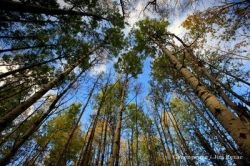
Other Denizens of Canada's Boreal Forest:
Residents of Canada's boreal forest include mountain goats, bighorn sheep, bison, woodland caribou, mule deer, white-tailed deer, elk, black and grizzly bear, coyote, raccoon, weasel, marten, mink, ermine, sable, striped skunk, bobcat, porcupine, woodchuck, chipmunk and many more.
(See Gallery below.)
The largest animals of the boreal forest.
Click thumbnail to view full-size









Photo Credits:
For the above gallery.
Canada's Boreal Forest Gallery
Mountain Goat
Courtesy of: Wikimedia
Photo by: Brad Emerson
Bighorn Sheep
Courtesy of: Wikimedia Public Domain
Bison
Courtesy of: Wikimedia Public Domain
Woodland Caribou
Courtesy of: Wikimedia
Photo by: D. Gordon E. Robertson
Mule Deer (at Clearwater Pass in Banff National Park)
Courtesy of: Wikimedia Commons
Photo by: Alcazar Mountain
White-tailed deer
Courtesy of: Will Borden
Elk
Courtesy of: Wikimedia Public Domain
Black Bear
Courtesy of: Wikimedia Commons Public Domain
Photo By: Ken Thomas
Grizzly Bear
Courtesy of: Wikimedia Commons
Photo by: Charlesjsharp
Black Bear Cubs
Courtesy of: Wikimedia Commons Public Domain
BIRDS
Birds of the boreal forest. - Warbler
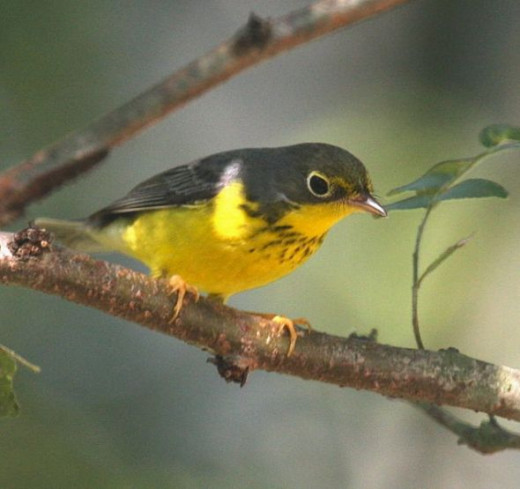
The boreal forest is beloved in summer by birds. In fact, it is estimated that several billion birds of over 200 species breed every year in the boreal forest. Nighthawks nest on its cool floor, robins, boreal chickadees and kiglets, flycatchers, jays and grouse are abundant, and each marshy lake has its flock of noisy red-winged blackbirds and its waterfowl. Bonaparte's gulls nest in the trees; the boreal owl hoots over the swamps all year long.
Small birds such as warblers, vireos, thrushes, kinglets, grosbeaks, sparrows, and flycatchers which are hard to see but wonderful to listen to, pass through the boreal to breed further north.
In winter when the forest seems almost balmy compared to the bleak alpine willow patarmigan come visiting.
In the far northeast corner of the the province of British Columbia, in the Peace River area breaks the pattern of dark forest, its parklands dotted with groves of aspen birch, willow and balsam poplar. Into this region with its prairie climate come birds more commonly seen east on the prairies: the large black common grackle; rose-breasted grosbeak; black-and-white, magnolia and Connecticut warblers; and eastern phoebe. The jay most often seen here is the blue jay of the east, not the Steller's of the coast or the whisy jack of the southern mountains.
Notes from the Northern Boreal wandering bird biologist's field journals
I found this to be a very interesting, educational and enjoyable article published in "The Manitoban" by Bryce Hoye on the thermoregulation; foraging black terns; red-winged black birds and the "trillers" of the Alberta boreal region.
If you wander over to their website, please return back here. The best is yet to come.
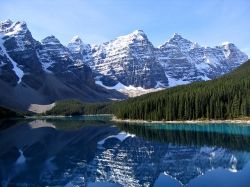
Federal Protected Areas in Canada
For Birds
The designation of Yosemite (1864) and Yellowstone (1872) as national parks in the United States is often referred to as the beginning of modern protected areas, i.e., formally designated pristine and wilderness areas that were set aside for protection and for the enjoyment of the public and future generations. The creation of the first modern protected areas in Canada began with the designation of Banff National Park (1885) and last, Mountain Lake Waterfowl Refuge (1887).
At present, there are 92 Migratory Bird Sanctuaries across Canada, comprising almost 11.5 million hectares of habitat that provides safety for migratory birds, species at risk and other species of national interest.
Photo: Moraine Lake and the Valley of the Ten Peaks (Banff, Alberta) Photo Credit
A Grand Exodus - Red-Breasted Nuthatches
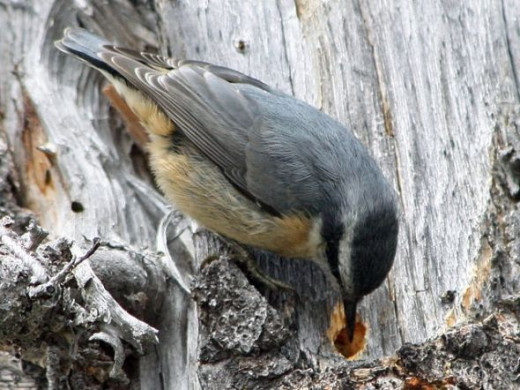
This fall the diminutive and arobatic Red-Breasted Nuthatches and the Pine Siskins have uncharacteristically flocked from the boreal forest in droves, flying south to the U.S. border.
Why this incredible influx of birds that are quintessential north country birds? Because, across much of the Canadian boreal forest, the seed crop has failed. Faced with no food for the winter because of the dismal cone/seed production in the Boreal forest it is a flight for survival.
Fun Fact: The nuthatch's habit of wedging a seed into the bark of a tree and hammering it has given rise to its name.
The Pine Siskin
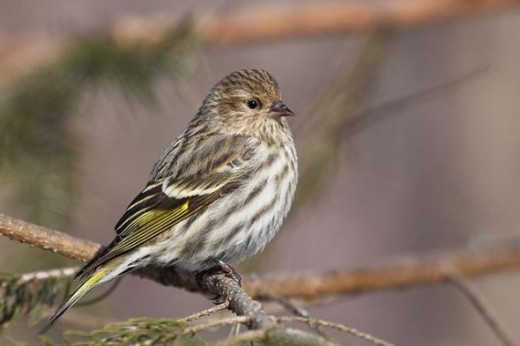
The Pine Siskin is a Boreal Forest bird in the finch family that migrates readily depending on its food supply.
Fun Fact: When eating from conifers, the Pine Siskin usually hangs upside down from the tips of the cones.
Fish
Life in the boreal forest waters - Arctic Greling
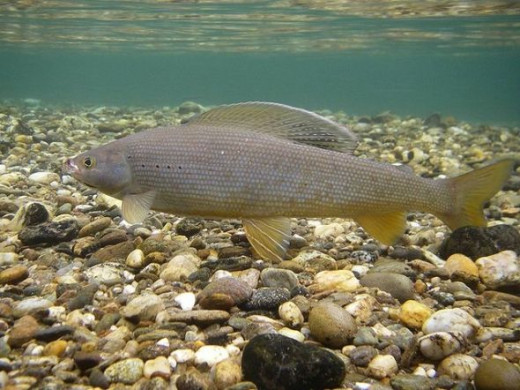
Fast rivers, streams and lakes throughout the Canadian boreal forest are home to about 130 species of fish. The mountain whitefish, Arctic graling, walleye and northern pike are found only in far northern waters and feed on lake trout, white sucker and lake sturgeon.
The lower reaches of larger rivers where nutrient levels are high, support populations of white sturgeon, a primitive shark-like fish which grows slowly to monster proportions - the largest recorded weighed 818 kilograms - and lives for a very long time. Fished heavily by the first settlers, this fish was considered commercially extinct as early as 1901. Sturgeon are making a slow comeback and today are fished mainly for sport.
Lake Sturgeon - Why valuable and what is happening to them.

Sturgeon is a valuable gourmet food fish, as well as source of specialty products including caviar and isinglass.
Today, limited sturgeon fishing is permitted in only a few areas.
In addition to over-harvesting, it has been negatively affected by pollution and loss of migratory waterways. It is vulnerable to population declines through over-fishing due to its extremely slow reproductive cycle; most individuals caught before twenty years of age have never bred and females spawn only once every four or five years.
In 2012, the largest sturgeon harvested (a female) was 125 years old, weighed 240 pounds, and measured 87.5 inches in length. Few sturgeons now reach that extreme old age or large size as previous generations often did.
ECONOMY
Economy from the boreal forests - Life is good!
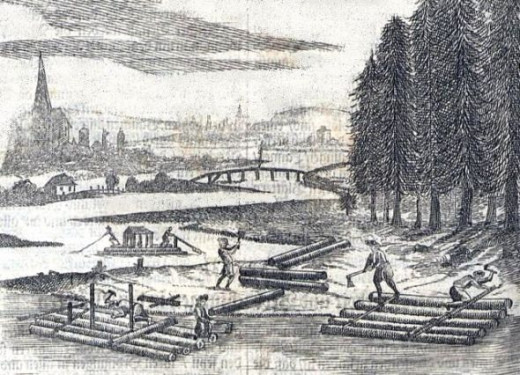
Every summer, rented RVs trundle across Canadian highways, occupants gaping at the vastness and beauty of the landscape.
Yet the beauty and diversity did not score many points with the first Europeans to see it. Most suffered long journeys aboard cramped, sour-smelling, poorly provisioned ships to arrive here, or made arduous treks through swamps and over icy mountain passes. Little wonder the newcomers were often in a bad mood by the time they reached the "land of promise," unlikely to praise the scenery as they named a Desolation Sound, a Mosquito Creek, or a Red River.
What did they find attractive about the landscape? What they had set out in search of - the prospect of profit. They cast assessing eyes on furs and salmon, tall trees they could cut for timber, creeks they could pan for gold, grasslands where they could pasture their animals, and swamps they could drain for farmland and settlements.
Log booms now.
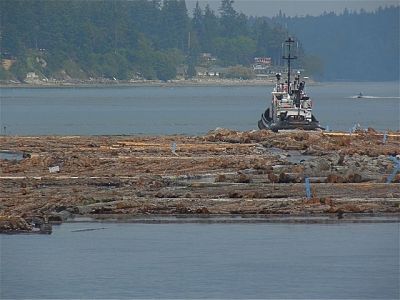
Employment Enjoyed in Canada's Boreal Forest - Real, live, people tell it as it is.
The boreal forest offers a diversity of employment for our young.
FUN!
Summer Hikes in the boreal forest. - Will and Me
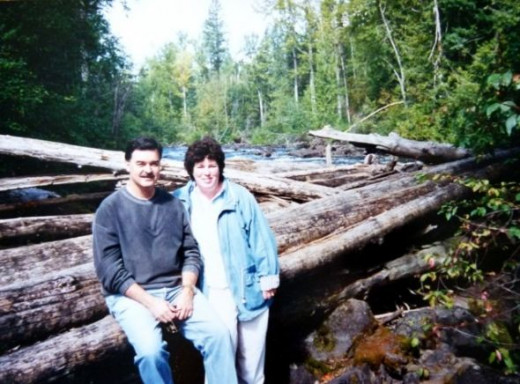
Water sport - Whee! What fun! That's me!
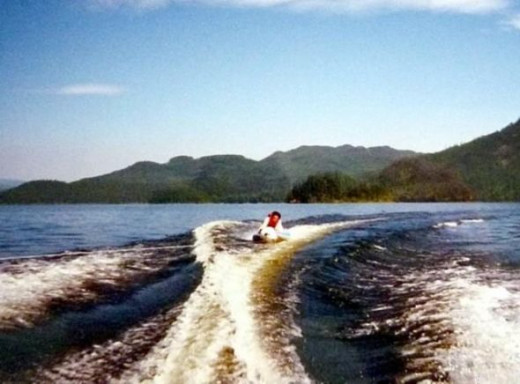
Kayaking in the boreal forest region.
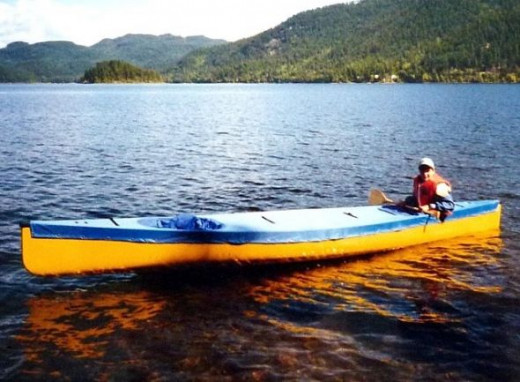
The Inuit people live in a part of Canada devoid of forests. But that did not stop them from building watercraft. For raw materials, the Inuit used the skins of seals and caribou, as well as bones and driftwood that washed onto Arctic shores. Animal fat helped make the vessels waterproof. The result was the kayak.
The most obvious difference between a kayak and a conventional canoe is the kayak's cover, which affords some protection from the elements and allows the kayak to roll over without taking on much water. Modern kayaks are usually made from fiberglass and other synthetic materials.
A journey by kayak along ancient waterways is a good way to rediscover our lost relationship with the natural world and the Creator who put it all together so long ago. Many would heartily agree with that!
Dog Sledding - A means of transportation .. also pleasure.
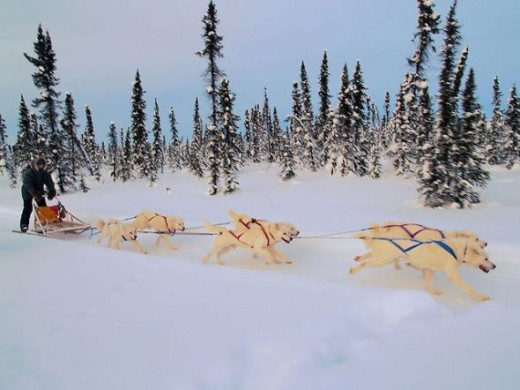
Courtesy of: Wikimedia
Photo by: Martin Male
Winter Camping - Hot Tenting
Winter Camping Poll
After looking at the videos.. do you think that you'd like to try winter camping?
Ice Fishing - A wonderful experience!
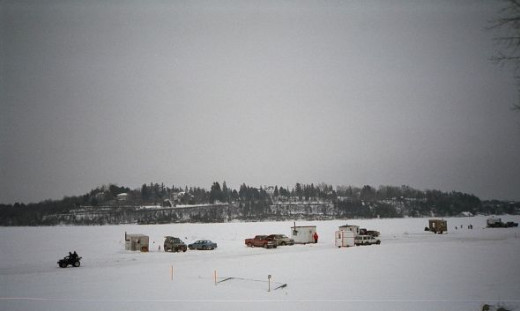
Ice fishing in Canada on the Ottawa river between Ottawa, Ontario and Gatineau, Quebec
Simple? Do we just drill a hole in the ice and start fishing?
Well, not as simple as that if you are going to catch enough for your evening meal. Choosing the right location is essential. Since fish use less energy to find food in the winter, it is important to know where the fish congregate. Some fishermen have a successful fishing history behind them and they can pinpoint a good location by earlier ice-fishing outings. If going to strange waters, a careful survey on the map and planning beforehand where to look for fish is the best idea. An ice fisherman also learns to observe the weather and its effects on the movement of fish. He can look for fish by drilling holes in the ice in various places. A fisherman may drill dozens of holes during a day.
Stay warm and dry during winter trekking.
Winter/cold weather can be uncomfortable if you are not wearing the proper protective gear. Here are a few items selected to make your wintertime in the snow more fun and safe.
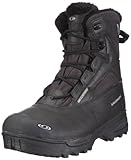
Future of wildlife in Canada's boreal forest. - Is there any hope for survival?
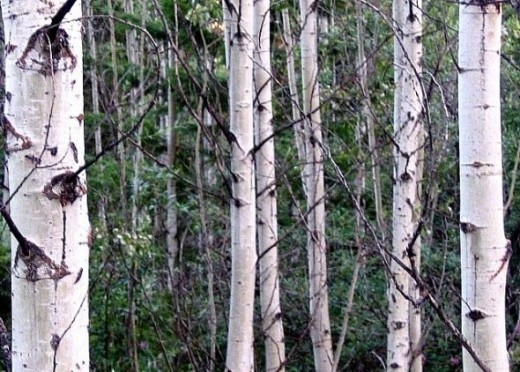
The great wonder of this planet is the profusion and diversity of life that it sustains, both on land and under the water. Many of the problems related to the wild kingdom seem unsolvable. As human populations grow, deforestation progresses and wildlife is squeezed into smaller and smaller areas, the managing and preserving of that wildlife will become more and more difficult.
LOVERS of
wildlife are pained at its wanton destruction by thoughtless individuals.
THREATS
Threats to the Boreal Regions
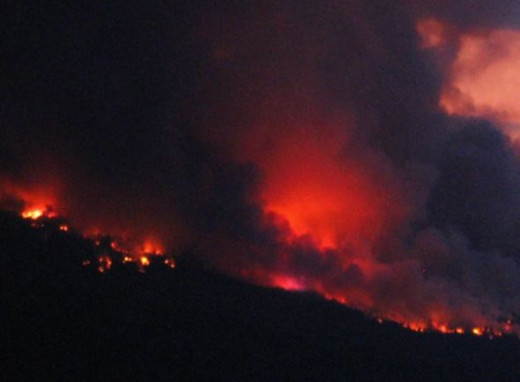
It is my opinion that the boreal forest of Canada is just as important to the global ecosystem as the Tropical Forests and they should be given equal attention by all concerned with forestry and the environment.
Real threats to the boreal forest are:
~ Fire (a little is good but not so with extreme fires)
~ Air pollution (from smelters and power plants)
~ Radioactivity (from atomic power and weapons testing)
~ Adverse impact of new mineral and oil/gas extraction.
~ New threats to endanger species.
Below are a few videos I have chosen that emphasis some of the threats to our boreal forest.
FIRE!
See what a difference approximately 2 hours can make to a forest on fire.
Mining Tar Sands Threaten the Boreal Forest
Our beautiful ecosystem under threat. - Very moving!
Speaker - Dr. Wade Davis - Anthropologist
Dr. Davis grew up in Montreal but now lives in Northern B.C. He loves studying people and their culture. As a widely-traveled anthropologist looking at the many cultures around the world, he says, "It gives you the opportunity to live among people who have not forgotten the old ways. All of these people teach us that there are other ways of being, thinking and orienting ourselves in social, spiritual and ecological space."
Climate Change - An immediate danger!
HOPE OF SURVIVAL
It's Not Too Late
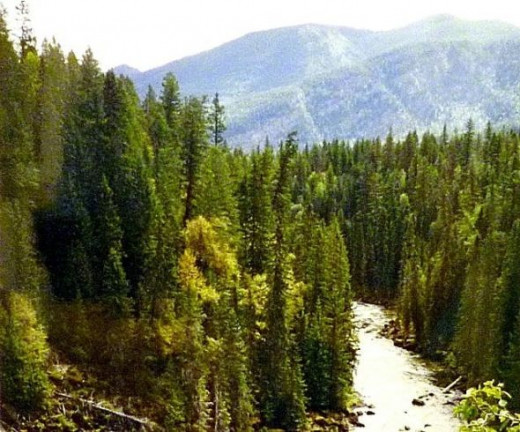
Those of us who share Canada's boreal forest environment have two things for which we can be grateful. The first, is a rich and diverse natural heritage unique in the industrialized world. The second is an unequaled-opportunity to make that heritage a part of our future.
Environmental concern as we now know it is a relatively recent phenomenon in this region. It is not long ago that we began collectively to understand that our development and our technology had the potential for disrupting natural living systems, including those on which we ourselves ultimately depend. It was even more recently that we actually began to do something about it.
In many parts of the world this understanding, and the lessons that accompanied it, came too late to prevent major environmental damage. In the boreal forest of Canada, we were more fortunate. Today, we are still in a position to strike a balance between the impact of development and the quality of environment we want to maintain - and we have those bitter lessons of others to guide us.
Can you help? - Will you speak out?
"People have been putting their bodies on the line and risking arrest in order to protect our future, to ... read more
If you could, would you do your utmost to save the forests of the world?
Greenpeace Campaigns - Wonderful to watch!
Signing of the Canadian Boreal Forest Agreement - A Large Step Forward
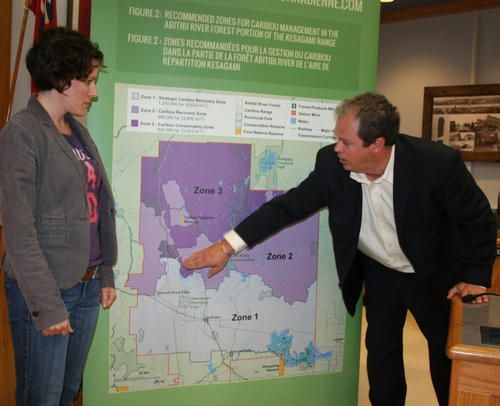
MAY 2010, twenty-one members of Forest Products Association of Canada signed a voluntary agreement with Enviornmental organizations that accounts for an area of 170 million hectares with a 3 year moratorium on logging covering 29 million acres of boreal forest to allow for endangered species to recover. (Caribou)
The FPAC agreed to support the government's work on reducing Greenhouse gas emissions across the supply chain of producers and improving the prosperity of communities that rely on the Canadian forests.
More information about this agreement is available on the Website at the address: The Canadian Boreal Forest Agreement - An Agreement Signifying a New Era of Joint Leadership in the Boreal Forest
Still a Concern:
Will poorer countries such as Indonesia and Brazil, who have a more complex commercial structure, adopt a similar agreement? They may not have the resources to effectively monitor problems such as deforestation.
Whatever happens with other countries, I am happy that Canada has proved willing to take responsible steps to increase forest sustainability.
Clear and Concise - Well done!
If you can get by the little boy with the caribou head, I believe you will come to understand:
~ Why the aboriginals were not involved in the signing of the Canadian Boreal Forest Agreement.
This was one thing that puzzled me.
2011 Woodland Licence - Huu-Ay-Aht First Nation
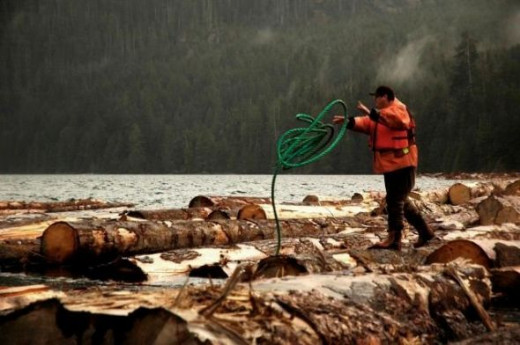
Flickr. Photocredit: Ryan Godard
About 80% of Canada's aboriginal population (including one million in over 500 First Nations and Métis) lives in forested areas and the boreal forest. Of that number, over 17,000 work in the forest products industry. Hundreds of cities and towns within its territory derive at least 20% of their economy from the forest, mainly from industries like forest products, mining, oil, gas and tourism.
The Huu-ay-aht First Nation signed the first-ever First Nations' woodland licence with the Province of British Columbia at the B.C. Legislative Buildings on December 2, 2011.
The new First Nations Woodland Licence provides increased tenure security and improves Huu-ay-aht First Nations' ability to secure investment and loans.
Very encouraging words.
SUMMARY - We Have Learned and Are Still Learning
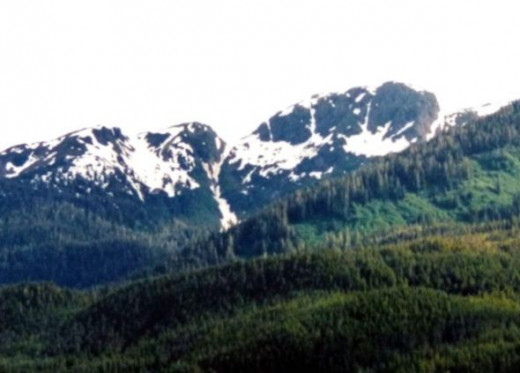
It is no exaggeration to say that we have probably learned more, and learned to care more, about our environment during the last couple of decades than in the previous two hundred years since man first began to have major impact here. But while there is a strong tendency to judge past actions by today's standards, the real challenge is in applying our current knowledge and understanding to the future. And this is a job we all share, just as we all share the environment itself.
The results will show in the way we plan for major developments and will depend on the degree to which individual Canadians learn to participate in a conserving society. The economic, political and educational mechanisms are there; we have only to apply them.
So in a very important way, this lens comes at just the right time. In showing our country at its best, it serves not only as a celebration of the natural beauty we now enjoy but also as a warning that we have much to lose if we ignore the needs of the land, the water, the plants and animals that surround us. These are the images of the present. But with vigilance, and the proper application of technologies now available to protect our environment, they will also be the images of the future.
Tar Sands in Alberta - Canada's worst environmental disaster!
Please share this video with your friends and family in order to help spread the word. Together we can make a difference, together we can stop the destruction.
Soundtrack: Adagio for Strings by Boston Symphony
Read and Weep
Facts about the Tar Sands in Alberta
- It covers an area the size of England and Wales combined: Total area= 140,200 km squared, or 54,132 square miles.
- Oil from the tar sands is one of the world's most carbon-intensive fuels.
- Two tonnes of tar sand produces a single barrel of oil.
- The tar sands generate 40 million tonnes of carbon dioxide per year, more than every car in Canada combined.
- The oil itself is bitumen which contains cancer-causing polycyclic aromatic hydrocarbons.
- To reach the bitumen, the Boreal Forest is destroyed.
- Because of the tar sands, Canada's greenhouse gas emissions have grown more since 1990 than those of any other G8 nation.
- Important waterways like the Athabasca River are being contaminated by 11 million litres of toxic waste every day.
- Because of the Canada oil sands, the air is polluted with dangerous toxins, poisoning communities with rare cancers and autoimmune diseases.
- It destroys critical animal habitats and some of Canada's most pristine landscapes.
- Unfortunately, the Alberta government has approved every proposed project.
Take action and spread the word!
A MUST SEE! - PLEASE VIEW.
Other articles you may find enjoyable, fightening and/or enlightening.
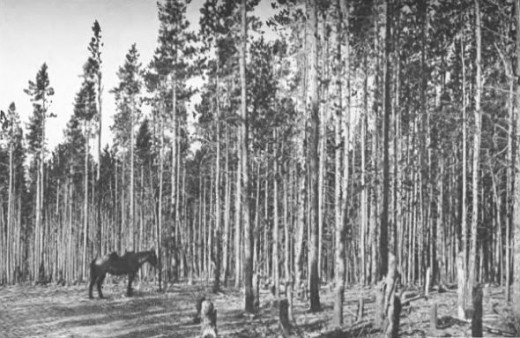
A book that puts it all in perspective. - Kindle or Hardcover
"Like a Tree" is an inspirational, spiritual and educational book for anyone who has ever admired, felt soothed by, or loved being in a tree, under trees, or in the woods. I really enjoyed reading it!
I'd really like to know ..
What, if anything, did you like about this lens?
My closing comments and ...
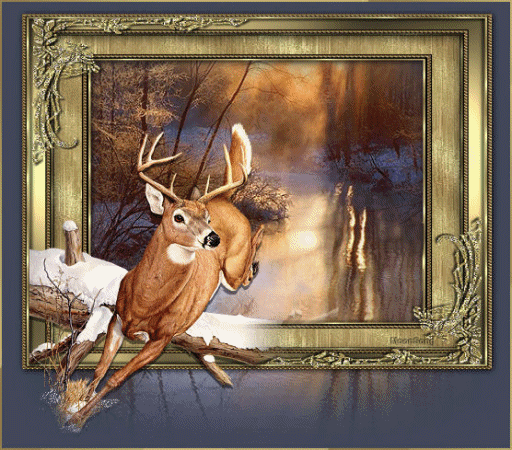
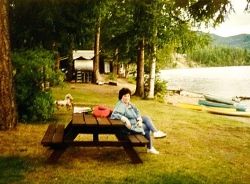
Upon Reflection
In the boreal forest.
As the sun is about to go down, the mountains that surround the valley of Canim Lake, B.C. stand blue against the darkening sky. I can hear the slip, slap of the lake below, and see the stars as they emerge beyond the trees. Then the northern lights begin to flow across the darkening heavens, and I am struck once more by the heart-aching beauty of the borel forest landscape.
Photo CreditReference Material
~ Farrar, J.L. 1995. Trees in Canada. Natural Resources Canada, Canadian Forest Service, Ottawa. (May be ordered online at www.fedpubs.com/subject/natres/trees.htm.)
~ Henry, J.D. 2002. Canada's Boreal Forest, Smithsonian Institute Press, Washington.
~ Nelson, J., and M.J. Paetz. 1992. The fishes of Alberta, second edition. University of Alberta Press, Edmonton.
~ Map: Canada's boreal forest: Reproduced with the permission of The Atlas of Canada, Geomatics for Connecting Canadians Program, Earth Sciences Sector, Natural Resources Canada, 2006.
Thank you dear friends,
I have had such an overwhelming response to this lens! Thank you for the attention you gave to this lens on a subject of such importance to me.
A humble thank you,
~ LaraineRose
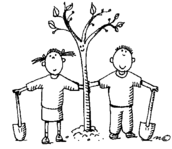
Are you a writer?
Would you like to make a page like this?
Are you interested in making a page like this? If you are, it is really quite easy.
Just Click Here to begin...open a free account and start your own "lens" on a topic of your choice.
For some there comes a moment of epiphany that reveals the intrinsic value of an old-growth forest or an undisturbed stream. For me, as for many, it has been a slow realization of what would be lost if I could no longer walk beneath the forest canopy, gaze across the startling colors of the dry country hills, or wander between the steep mountains of a narrow river valley. Even when I cannot visit these landscapes, it is tremendous comfort knowing they are there.
What about you?

